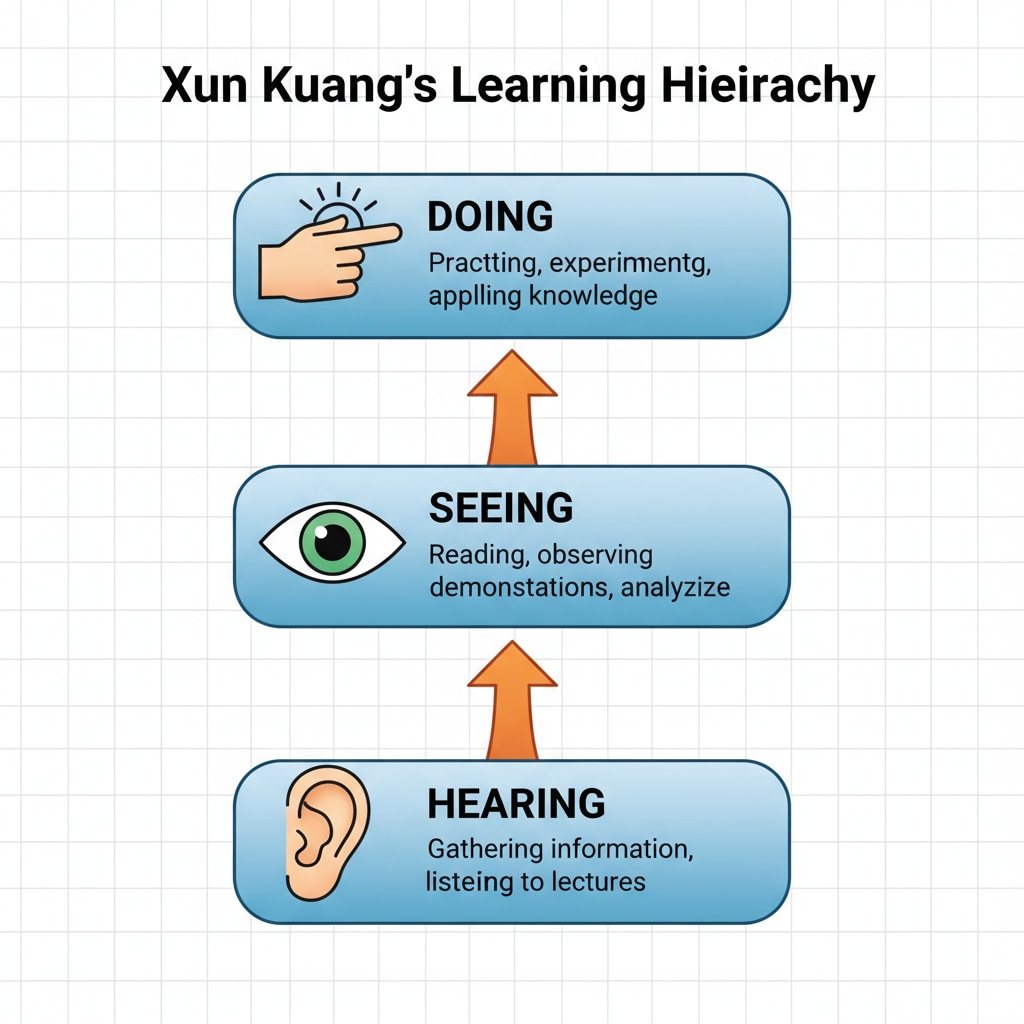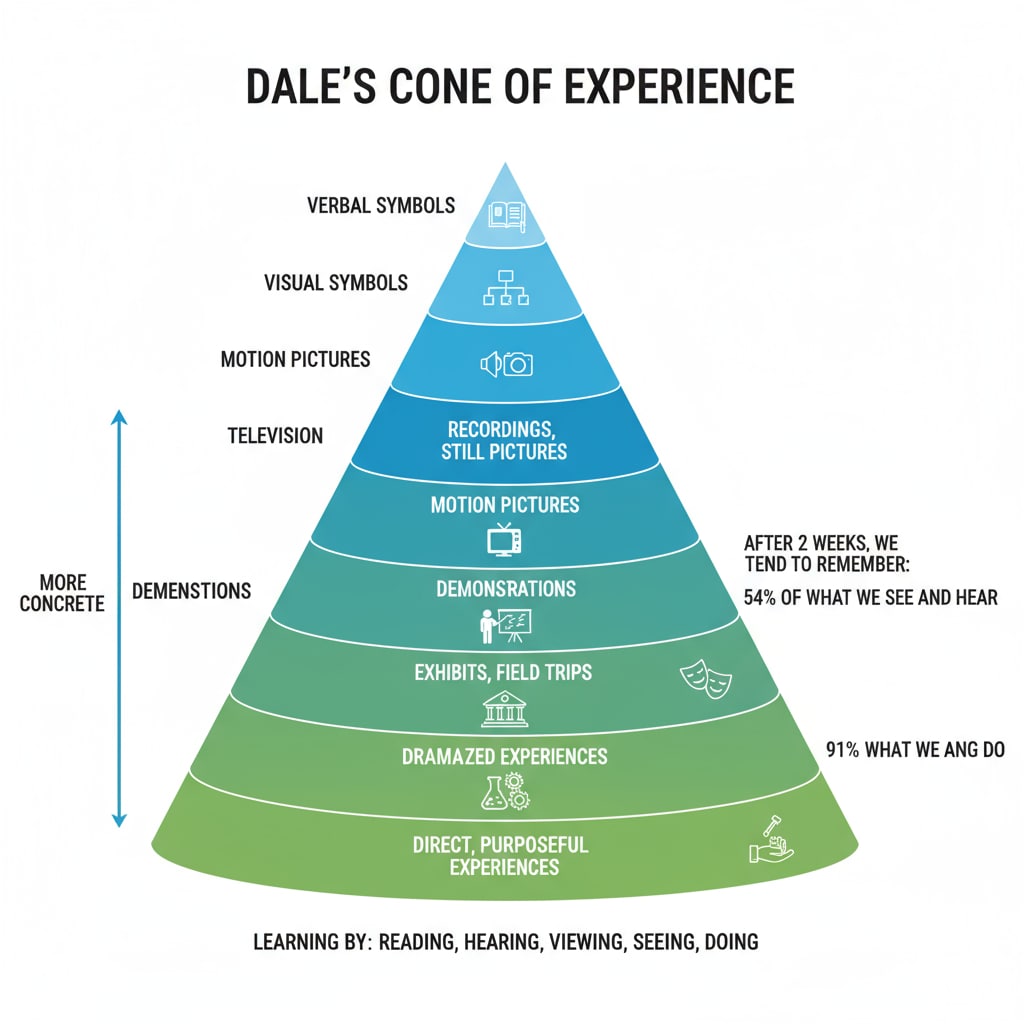Learning theories have long been a subject of interest in education, and the concepts of Xun Kuang, the Cone of Experience, and experiential learning offer valuable perspectives on the most effective ways to learn. In this article, we will delve into how learning by doing stands out as a powerful educational approach.
The Wisdom of Xun Kuang on Learning
Xun Kuang, an ancient Chinese philosopher, proposed a learning hierarchy theory. He emphasized that true learning goes beyond mere knowledge acquisition. According to Xun Kuang, learning involves three levels: hearing, seeing, and doing. Hearing is the most basic level, where learners receive information passively. Seeing is a step further, as it allows for a more visual and direct understanding. However, it is doing that Xun Kuang regarded as the highest level of learning. Xun Kuang on Wikipedia When learners engage in practical activities, they can truly internalize knowledge and turn it into practical skills.

The Modern Perspective: Dale’s Cone of Experience
In modern education, Edgar Dale’s Cone of Experience theory provides another lens to understand learning. The cone is structured with different levels of learning experiences, from the most abstract at the top to the most concrete at the bottom. The lower levels of the cone, such as “doing a hands-on activity,” represent more direct and engaging experiences. These experiences are more likely to be remembered and understood by learners compared to the more passive forms of learning at the upper levels, like “listening to a lecture.” Cone of Experience on Britannica This theory aligns with Xun Kuang’s idea that practical, hands-on learning is crucial.

When we consider the connection between these two theories, it becomes clear that learning by doing combines the best of both worlds. By actively participating in tasks, learners are not only using their hands but also engaging multiple senses. This multi-sensory engagement enhances the learning process. For example, in a science experiment, students not only see the results but also feel the materials, smell certain substances (safely), and hear the sounds associated with the experiment. This holistic experience makes the learning more memorable and effective.
For contemporary K12 education, the implications of learning by doing are significant. Teachers can design more hands-on projects and activities. For instance, in a history class, instead of just reading textbooks, students could recreate historical events through role-playing. This would allow them to understand the context and emotions of that time more vividly. In a math class, students could build models to understand geometric concepts better.
Readability guidance: As we’ve seen, both Xun Kuang’s ancient wisdom and Dale’s modern theory point to the power of learning by doing. By integrating these ideas, educators can create more engaging and effective learning environments for students. This approach not only helps students acquire knowledge but also develop practical skills and a deeper understanding of the world around them.


